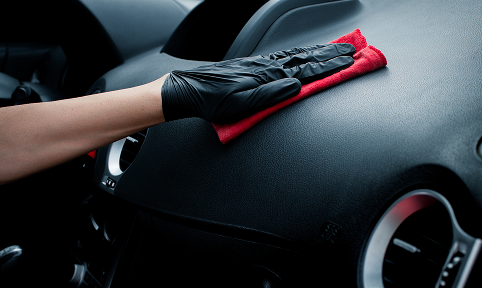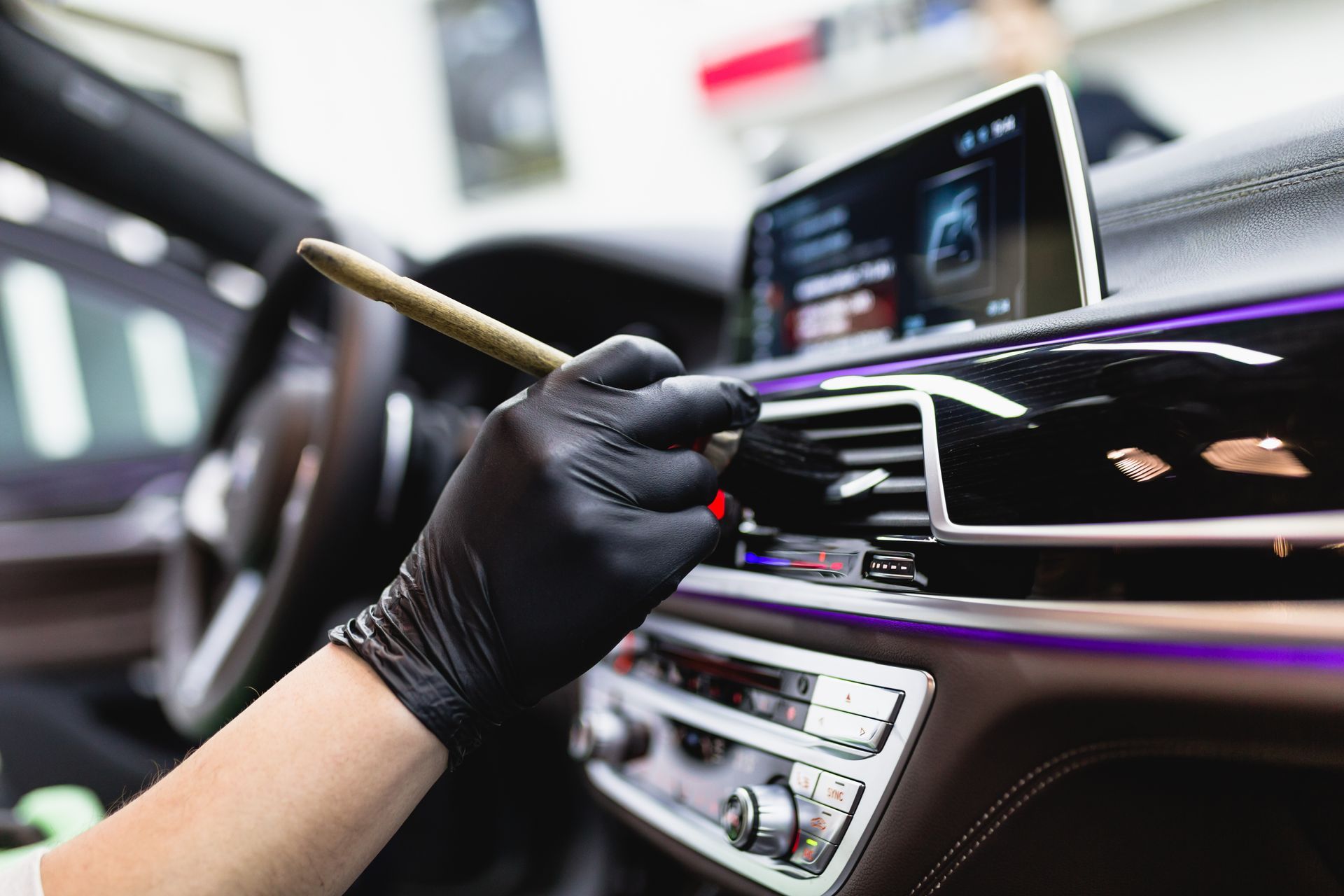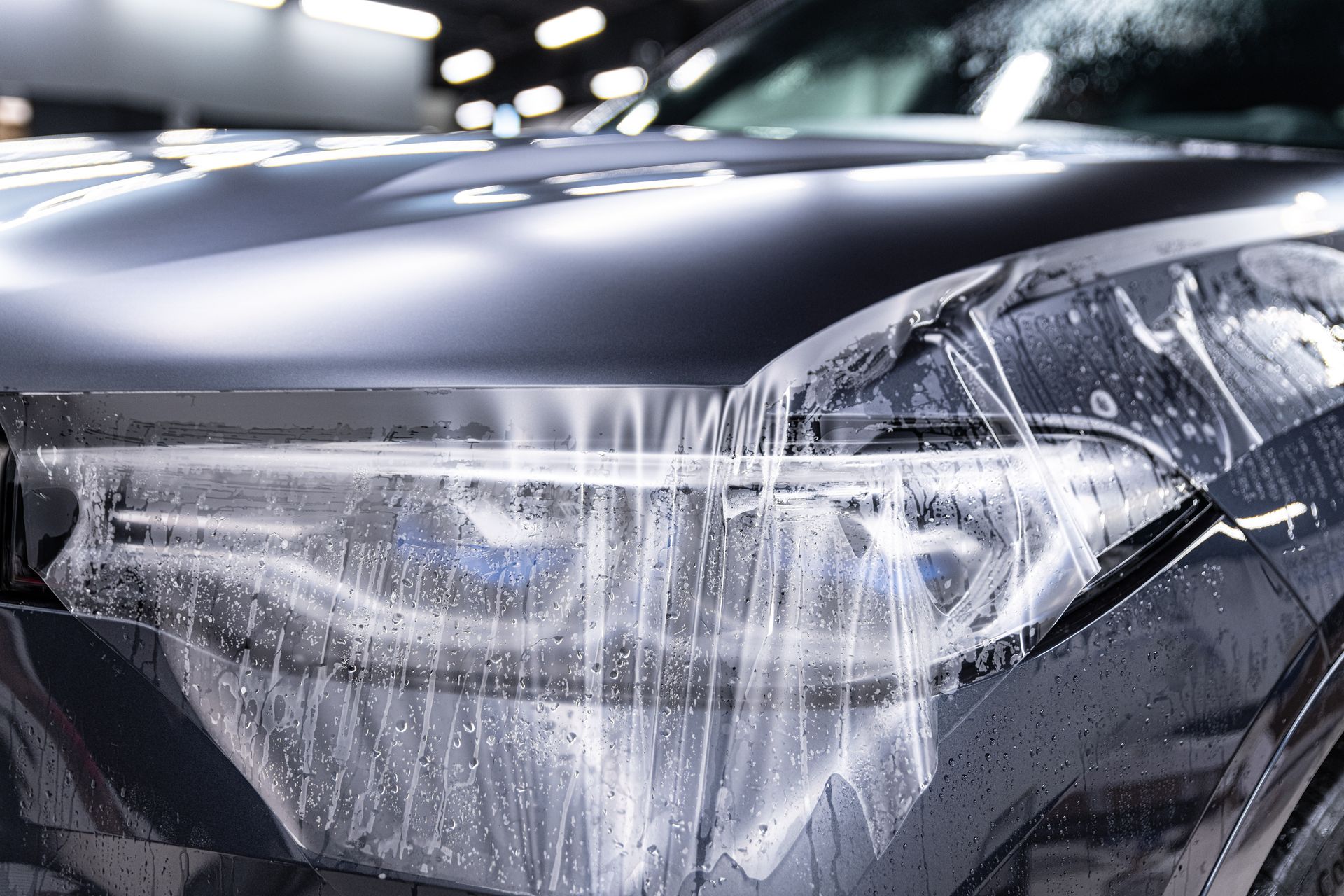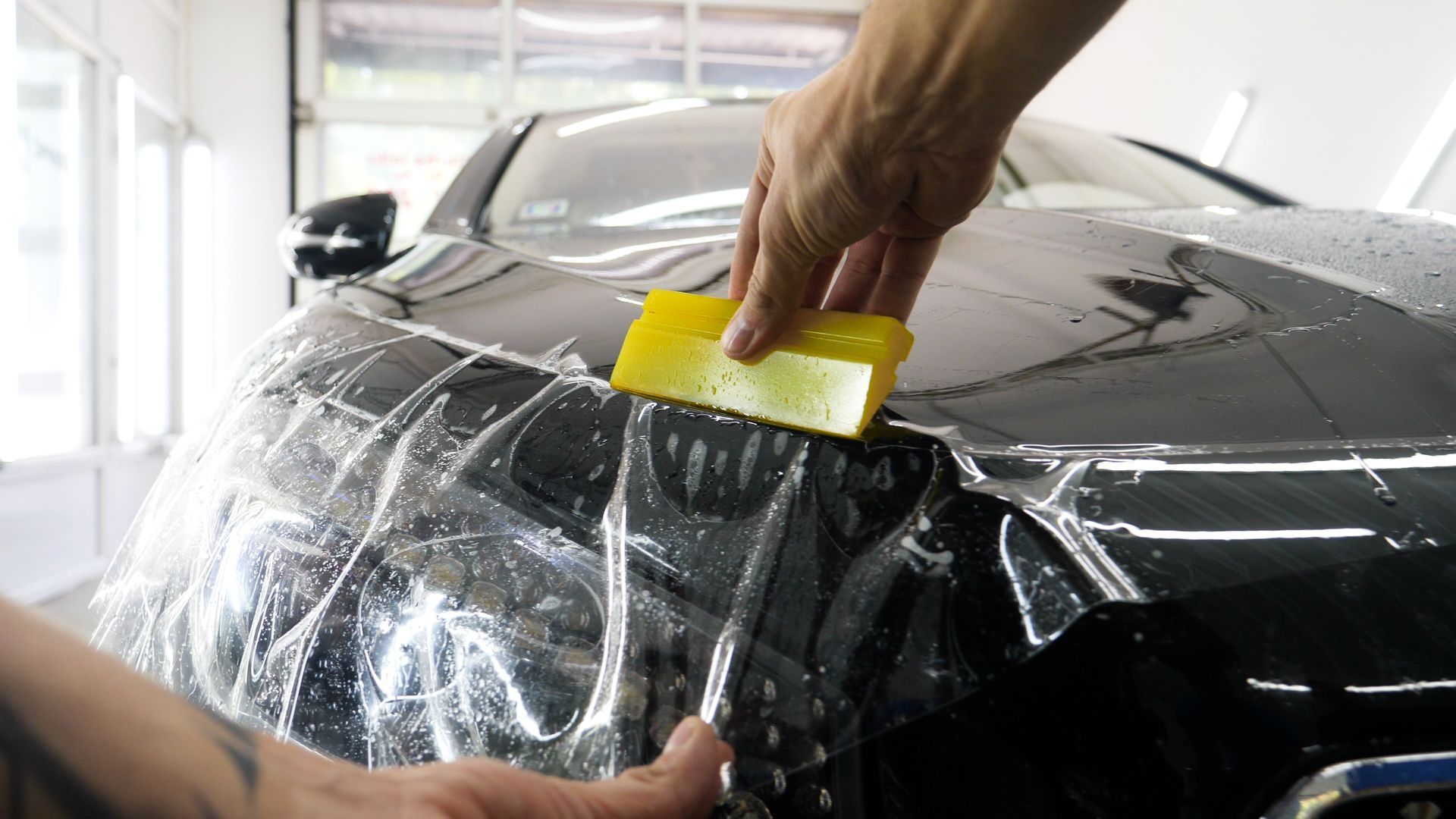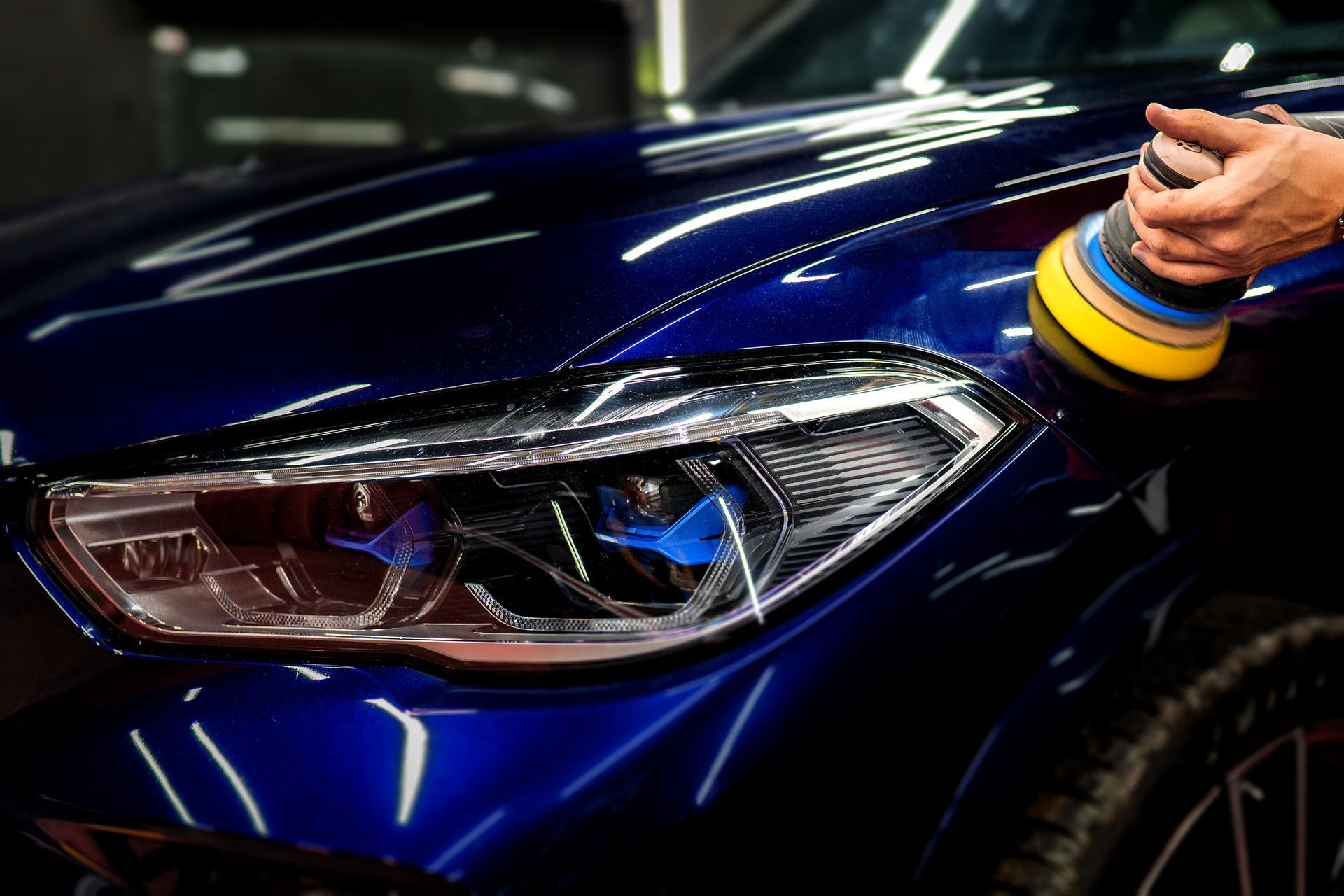Some window films take up to 30 days to dry fully in mild weather, some experts say. This time gap surprises many drivers. It's important because mistakes early on can cause issues like peeling, bubbles, or haze that won't go away.
This section answers a common question: How do I know when my car window tint is cured? It combines real shop advice with checks drivers can do themselves. You'll learn the signs of a cured tint, how long it takes, and what it should look like in different climates across the United States.
The car window tint curing process changes from milky to clear. When it looks clear, edges stay in place, and there are no water bubbles, it's fully cured. Warm sun speeds up the process, while cold, rain, and humidity slow it down. Most vehicles reach a stable finish in one to four weeks, with the first 48 to 72 hours being the most critical for leaving windows up.
Key Takeaways
- A fully cured window tint looks clear and uniform—no haze, no moisture bubbles, and firm edges.
- Typical cure time ranges from 1 to 4 weeks; warmer, sunnier weather shortens drying, while cold and humidity extend it.
- Keep windows rolled up for 48–72 hours to protect adhesion and prevent peeling or wrinkles.
- Early haze and small water pockets are normal signs during the car window tint curing process.
- Delay interior glass cleaning for at least a week; avoid ammonia-based products to protect the film.
- Sun exposure can help; on cool or rainy days, park indoors and be patient as the film dries.
Understanding the car window tint curing process and drying time
The car window tint curing process begins when clean glass meets the film. Installers use a soapy solution to float the film. They then squeegee out most of the moisture, leaving a thin layer between the film and glass.
This thin layer causes early haze and small pockets. These will fade as the moisture evaporates. It's a normal part of the curing process.
In the first days, a foggy look and tiny bubbles are common. It's important not to press or pick at them. Doing so can trap air or twist the bond.
Patience is key to achieving a clear finish. It helps the window tint dry properly.
Weather affects the curing process. Sun and warm, dry air speed it up. Cold, rain, and humidity slow it down.
Parking in direct sun helps the tint cure faster. But, a stable garage is better on damp or chilly nights. This is true when curing window tint at home.
Timelines vary based on climate and film type. Standard dyed films clear faster than some ceramic or carbon options. Regional humidity also plays a role.
In general, drivers keep windows up for 48–72 hours. Then, they watch as the film settles over several weeks.
The time it takes for window tint to cure depends on many factors. Ideal summer days can make it dry faster. But, cooler or coastal zones may take longer.
Choosing the right care is important. Avoid washing the windows to prevent adding moisture. Skip strong interior cleaners for at least a week. Also, limit heavy heat on the glass to prevent uneven stress.
As the surface clears, the film should look smooth and uniform. There should be no new bubbles and no milky cast left.
How do I know when my car window tint is cured?
Many drivers wonder when their car window tint is fully cured. The best way to tell is by looking at the glass. A fully cured tint is clear, with no haze or moisture. It looks like it was installed at the factory.
Touching the edges is another way to check. If they feel flat and don't lift when you roll down the window, it's cured. This means the tint has bonded well to the glass.
- First 48–72 hours: Keep windows up to protect the bond while moisture escapes.
- 3–5 days in cooler or humid weather: Extend the no-roll period to prevent edge lift.
- 1–4 weeks total: Expect a fully cured window tint once sun, temperature, and film type have done their work.
Watch for bubbles too. They should get smaller each day and disappear as the tint sets. If bubbles stay, the tint might need more sun or a check from the installer.
The weather affects curing. Sunny days help, while cold or humidity slows it down. Once it's cured, you can clean it gently without streaks.
If haze, bubbles, or peeling last too long, get it checked. Fixing problems early keeps the tint looking good and the glass clean.
Conclusion
The car window tint curing process starts with moisture and adhesive settling. At first, it looks a bit hazy and has small water pockets. It's important not to press or wipe on these.
Drivers often wonder how long it takes for window tint to cure. The answer is a few days to a few weeks. This time varies based on the climate, film type, and sun exposure.
A practical timeline is helpful. Keep windows up for 48–72 hours, or three to five days in cool or humid weather. Full cure usually takes one to four weeks. Curing in sunlight can speed up evaporation, while parking indoors on cold or rainy days protects the bond at night.
Look for clear signs of a fully cured film. It should be smooth, clear, and evenly stuck. There should be no haze, bubbles, or edges lifting. It should also handle normal window use and gentle cleaning.
Those curing window tint at home should avoid early car washes. Hold off on interior glass cleaners and skip extreme blasts from defrosters or heaters.
The key for U.S. drivers is to follow visual cues and respect the early no-roll period. By being patient and using sunlight when possible, the tinting process yields a durable finish. Curing in sunlight helps, and careful habits keep the tint looking factory-smooth and lasting.
Contact Impeccable Detail today for expert window tinting, auto detailing, and PPF services in the Phoenix Metro area!
Need a Mobile Detail in Phoenix? We Got You Covered.
Contact Impeccable Mobile Detail today for expert detailing services in the Phoenix metro area!



